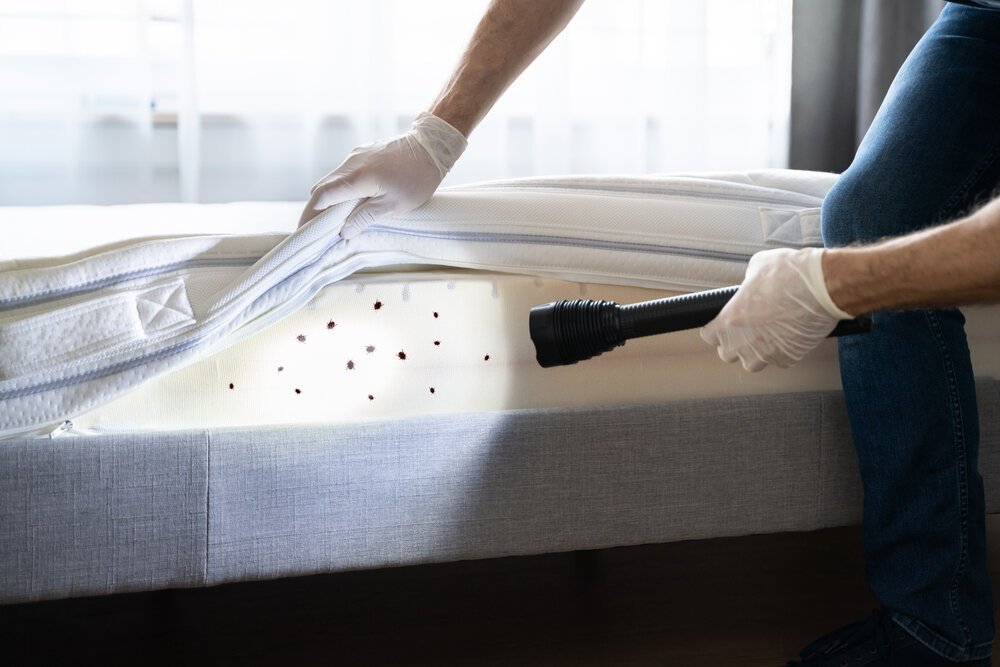Effective Bed Bug Exterminator: DC Providers with Heat Treatment
Effective Bed Bug Exterminator: DC Providers with Heat Treatment
Blog Article
Exploring the Science Behind Bed Insect Warm Treatments as a Lasting Parasite Monitoring Method
In the realm of pest monitoring, the pursuit for reliable and sustainable services stays a continuous quest. One such approach that has acquired grip in the last few years is using warm treatments to battle bed insect invasions. By harnessing the scientific research behind thermal death factors for these consistent parasites, warmth therapies offer an encouraging choice to traditional chemical-based approaches. The details of how heat properly eliminates bed insects and the wider implications for lasting parasite monitoring methods make this a subject worth discovering even more.
Bed Pest Heat Treatment Refine

Thermal Fatality Factor for Bed Insects
Revealing bed pests to raised temperatures beyond their thermal resistance range is important for achieving efficient elimination in heat treatment procedures. By getting to and preserving temperature levels over the thermal fatality point for bed bugs, insect administration specialists can ensure thorough elimination of bed insect populaces, consisting of hard-to-reach areas where chemical therapies might be much less effective. Recognizing the thermal fatality point for bed insects is important for applying successful heat treatment approaches and attaining sustainable parasite management outcomes.
Benefits of Warm Treatments
Having actually established the essential thermal death factor for bed insects, it is essential to now discover the significant advantages that warm therapies supply in efficiently eradicating these resistant pests. One of the key advantages is that warm can penetrate deep right into cracks and crevices where bed pests conceal, making certain that even the most hard-to-reach locations are heated up to deadly temperatures.
Additionally, warmth therapies are safe and eco-friendly, making them a sustainable pest administration strategy. Unlike chemical pesticides, heat therapies do not leave dangerous residues that can pose risks to human health and wellness or the environment. This element is particularly crucial in delicate environments such as healthcare facilities, institutions, and property locations where chemical use might not be desirable.
Furthermore, warm treatments have a high success price in getting rid of bed bug infestations in a single treatment, reducing the need for multiple informative post visits and decreasing disturbance to owners. This performance not only saves money and time but additionally provides tranquility of mind to those taking care of bed bug troubles.
Effectiveness of Warmth Treatment

Warm treatments have the included benefit of killing bed insect eggs, which are often immune to traditional chemical therapies. In general, the performance of heat treatments in eradicating bed pest invasions makes them a dependable and lasting insect monitoring method.
Lasting Insect Monitoring Conveniences
Executing lasting insect management methods uses long-term benefits for both the environment and public health. By utilizing approaches such as warmth treatments for parasite control, we can reduce the reliance on harmful chemical pesticides that can have unfavorable impacts on communities and human health - bed bug treatment. Lasting parasite monitoring approaches aid in protecting biodiversity by targeting particular insects without hurting non-target microorganisms, therefore preserving a well balanced ecosystem
In addition, sustainable parasite management methods contribute to the total health and wellness and health of the public. By minimizing direct exposure to poisonous chemicals these details made use of in typical visit this page pest control methods, heat treatments give a much safer choice for pest management in residential, industrial, and public spaces. This decrease in chemical use likewise aids in stopping pesticide deposits from infecting soil, air, and water, protecting environmental top quality.
Conclusion
In conclusion, bed pest warmth treatments have actually been shown to be a sustainable and efficient pest administration strategy. The thermal death factor for bed insects makes them susceptible to warm therapies, which have countless benefits over traditional chemical treatments. The effectiveness of warm therapies in removing bed insect invasions while reducing environmental influence highlights the possibility of this approach as a sustainable solution for insect control.
The bed insect heat therapy procedure entails elevating the temperature within plagued areas to a level that efficiently eliminates bed insects and their eggs. By getting to and keeping temperatures above the thermal fatality factor for bed insects, parasite management specialists can make sure detailed removal of bed bug populaces, consisting of hard-to-reach areas where chemical treatments might be much less efficient. One of the key benefits is that warmth can penetrate deep right into crevices and splits where bed bugs conceal, guaranteeing that also the most hard-to-reach locations are heated to lethal temperatures. Unlike chemical therapies that may leave behind resistant populaces, warm therapies offer a non-toxic and ecologically friendly service that can pass through deep into furniture, walls, and various other hard-to-reach locations where bed insects conceal.
The thermal fatality factor for bed pests makes them susceptible to warmth therapies, which have numerous advantages over typical chemical treatments.
Report this page